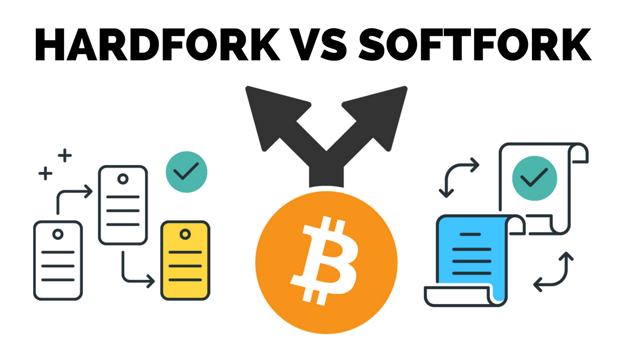Blockchains are a type of decentralized, open-source software that powers cryptocurrencies like BTC, ETH and LUNC. These blockchains keep track of every transaction that has ever taken place on their networks so that everyone can see what has been going on.
A fork occurs when a blockchain separates into two different chains with the same history when a community modifies the protocol. There are two types of forks: soft forks and hard forks.
However, what do these expressions really mean? Why are they significant, then? With an emphasis on their effects on the crypto community, we examine the distinctions between hard, and soft forks in further detail in this publication.
What Exactly Are Forks?
Before any software updates or modifications to the network’s rules can be performed in blockchain, a consensus must be obtained. A blockchain fork, which occurs when the procedure is finished, results in the blockchain splitting into two.
The older blockchain follows the same set of guidelines as earlier iterations, but the newer one also incorporates all upgrades to transaction processing methods.
Explaining hard forks
A blockchain hard fork happens when it divides into two irreversible branches. Although it works separately from the original chain, the new branch is governed by the same principles as the previous one.
When nodes and developers agree to abide by the new set of guidelines, a new blockchain is created that is incompatible with the original one. As a result, a hard fork reduces the security and effectiveness of a network because the consensus validators are no longer in accord.
Defining Soft Fork
A soft fork is a protocol modification that just needs to be approved by the majority of miners. It is less complicated than a hard fork, which demands that all users and nodes upgrade in order to continue working with the network.
Not every node on the network is required to upgrade to the new version in the event of a soft fork. A block chain with minimal updates advances in the network, eliminating the possibility of “double spending.” Hackers may occasionally employ backward-compatible soft forks to influence nodes and introduce harmful modifications to the chain.
Hard Fork vs. Soft Fork: Key Differences
If you are wondering how to tell the difference between a hard fork and soft fork, here are some instructions.
Level of Authority
Hard Forks usually alter the original protocol, necessitating a stronger consensus of nodes and miners while Soft fork updates are made at the network level and can happen even when a small group of developers want to include minor upgrades.
Exposure
A hacker could use the prevailing consensus to their advantage and manipulate it to generate a hard fork because hard forks are not backward compatible. Soft Works, on the other hand, can be tricked by attackers who seek to bring back the use of earlier models because it is backwards-compatible.
The Split of Chain
A hard fork is when a blockchain splits into two distinct chains. It happens when one set of users wants to expand the program’s capabilities while another group either does not want to or is unable to do so.
While some users may elect to continue using outdated software if they prefer not to upgrade, soft forks do not result in the splitting of the blockchain and are frequently optional.
Why is Fork significant?
The majority of digital currencies are developed by independent teams of programmers. In a similar manner, online browsing can get better over time thanks to adjustments made to Internet protocols.
When a cryptocurrency forks, new features or increased security are occasionally added. However, a fork can also be used by the creators of a new cryptocurrency to produce entirely new coins and ecosystems.
For instance, the Ethereum network faced a hard fork in July 2016 in order to refund $40 million in user funds after a hack. By altering the protocol and including a new smart contract, the retrieved monies were given back to their original owners.
Tokens from a decentralized autonomous organization were used to facilitate this recovery. However, they have had a significant effect on Ethereum trading volume and ecosystem.
Blockchain Development Involves Forks
Blockchain networks are gaining new capabilities, developers are experimenting with the technology, and coding errors are being rectified. Therefore, if any of these developments take place, blockchain networks must be forked.
Forks can affect token owners in a variety of ways. While some forks lower a cryptocurrency’s value, others do the opposite. If a project is going through a fork, it’s a strong indication that developers are still actively trying to improve their blockchain platform.
Final Thoughts
Regardless of the split type, it is obvious that more effort needs to be done to guarantee a seamless transition of blockchain upgrades and updates. Hard forks are preferred by the majority of blockchain miners and users because they reduce the possibility of validating or mining faulty blocks.
Whether they are hard, soft, the phenomenon of blockchain forks is something we will continue to observe in a more and more frequent manner. Even if they could be debatable, they are a logical outcome of how blockchain technology functions. There have been quite a few productive forks so far, and we anticipate seeing more of it in the years to come.










